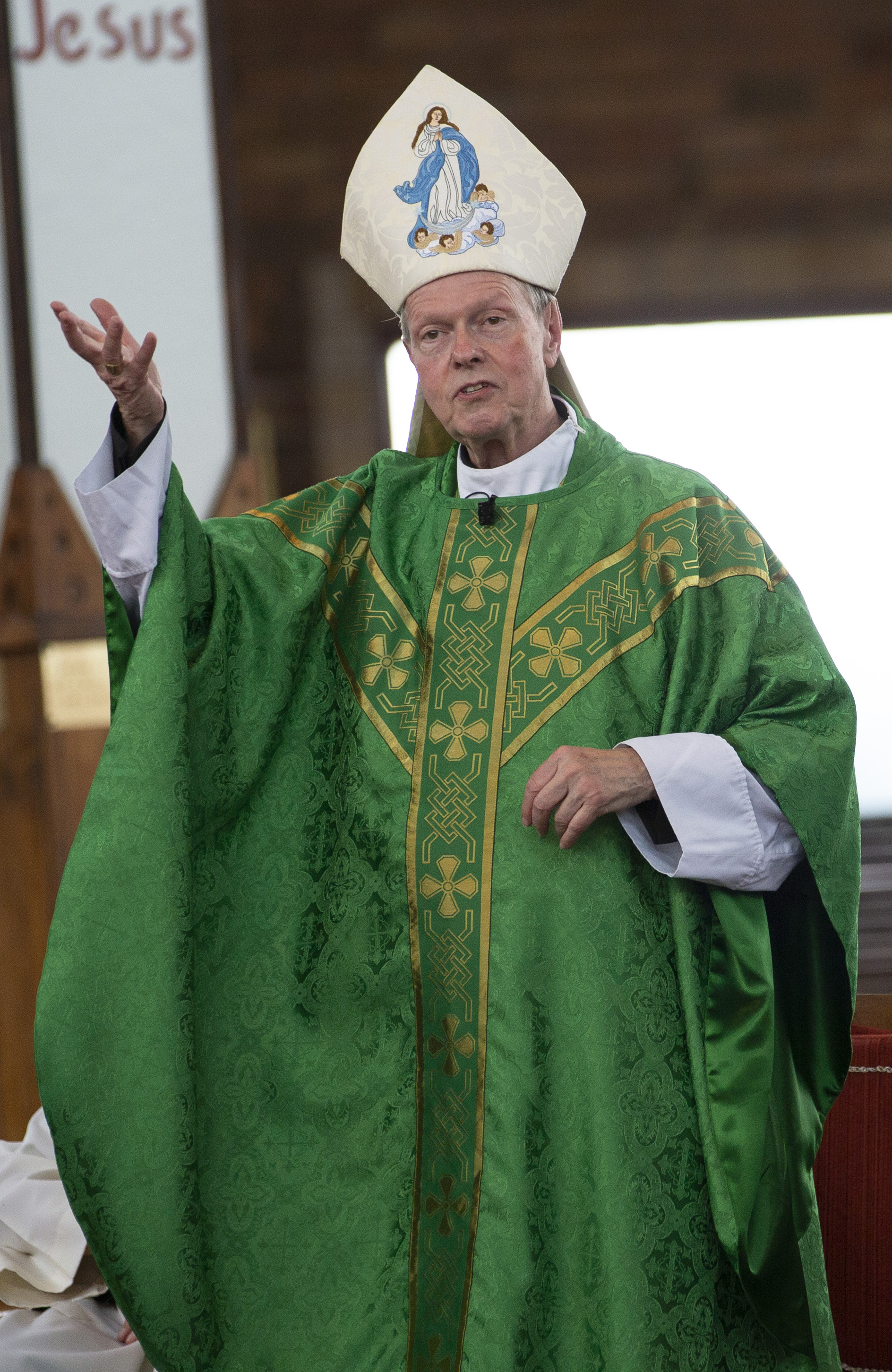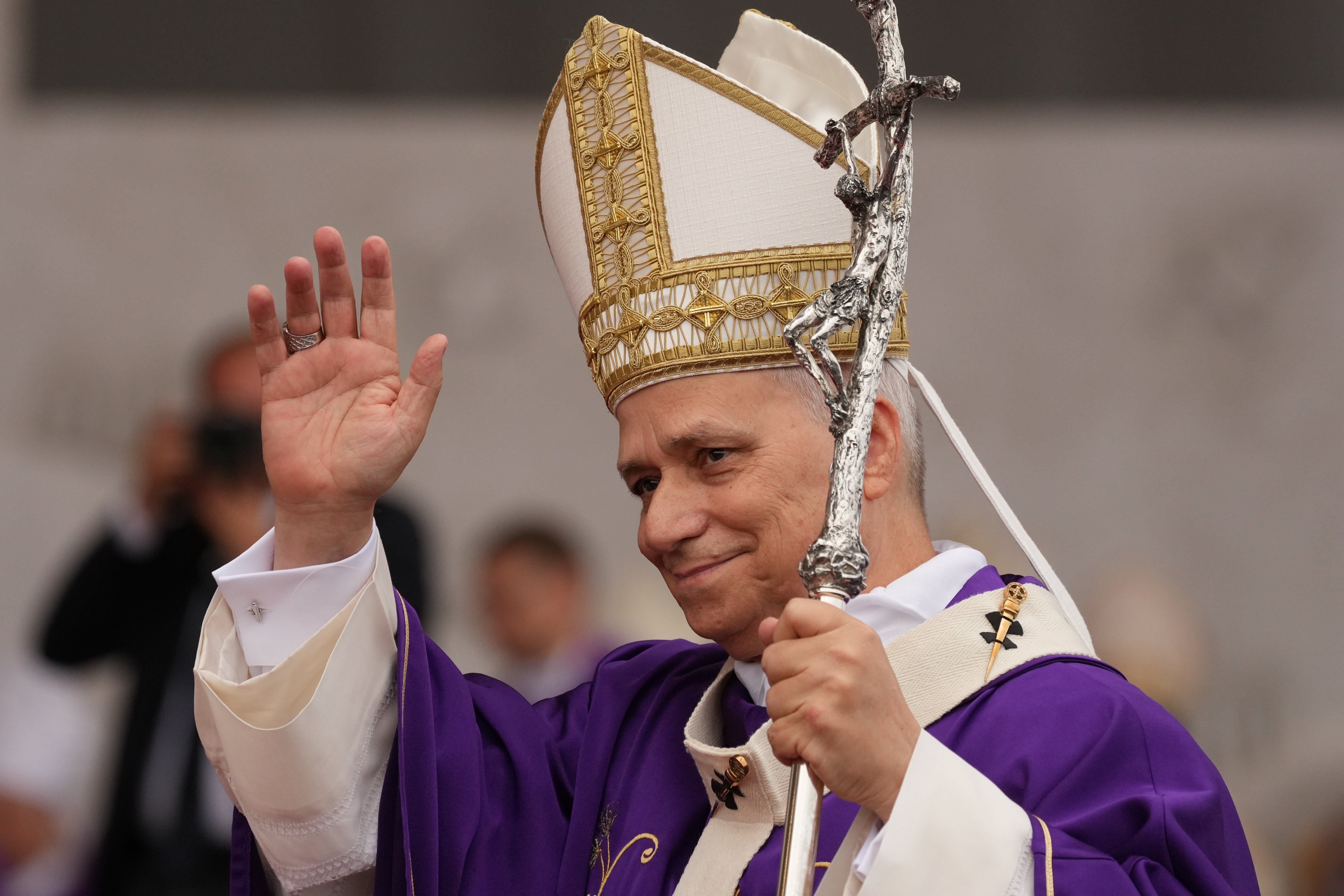September 29, 2020 at 7:49 p.m.
On October 7, we celebrate the Memorial of Our Lady of the Rosary. This title attributed to Mary has been traced to an apparition held by pious tradition to have occurred to St. Dominic in 1214. In the 16th century, Pope Pius V placed the feast of Our Lady of Victory on October 7 in the General Roman Calendar, associating it with the Rosary, for which we honor Mary today.
The practice of keeping count of prayerful thoughts on knotted rope is ancient. From the third century, the desert monastic communities in Egypt, for example, would keep track of their meditations on the Jesus prayer. The gradual growth of Marian prayer and devotion in the Christian world proceeded after the Council of Ephesus in 431 and continued throughout the Middle Ages.
Recall that at Ephesus, Mary was proclaimed as the Mother of God, in Greek, theotokos — God-bearer — not just Christotokos, or Christ-bearer. This implies not just an historical event, the Incarnation, but an eternal relationship with Incarnate Word, his undying birth. Mary forever bears God’s presence into the world — her Divine Son — the incorruptible seed (cf. 1 Peter 1:23).
The Dominican community contributed greatly to the formulization of Marian prayer in the rhythm of the five decades — groups of ten “Hail Mary’s” — preceded by the Lord’s Prayer and followed by a “Glory be” as we know it today. By the time of Pope Pius V (1566-1572), the three sets of mysteries — joyful, sorrowful and glorious — was customary.
Traditionally, the mysteries were allocated to specific days. Thus, the joyful mysteries were recited Mondays and Thursdays, the sorrowful mysteries on Tuesdays and Fridays, and the glorious mysteries, Wednesdays, Saturdays and Sundays. In 2002, Pope St. John Paul II added a new set, the luminous mysteries, which are now said on Thursdays, while on Saturdays the joyful mysteries are now recited.
All of the mysteries center on Christ in some way. Although directed toward our Blessed Mother, the Hail Mary itself pauses at “the fruit of thy womb, Jesus,” right in the heart of the prayer. In order to bring this “Christo-centricity” into a truly meditative recitation, one might consider adding “…is Lord” after “Jesus” at this point, reverencing the One in whose heart the heart of Mary is always centered. Mary always leads us to Jesus.
It is recommended by many saints and spiritual advisors that the Rosary be recited slowly, concentrating not so much on the words, but meditating on each mystery. Many online resources are available, too numerous to mention, but accessible simply by entering the word “Rosary.” You may find artistic representations of the 20 mysteries that might be useful as aids for meditation.
Some of the online sources provide scriptural passages for each mystery that could serve as food for entering into a deeper form of meditation known as “Lectio Divina,” wherein one reads a passage, often joining with others, and listens with the heart to the voice of God, the movement of the Holy Spirit.
Is there a good time to pray the Rosary? Any time is a good time, but one should allot at least ten minutes. Father Patrick Peyton promoted the practice of the Family Rosary — “the family that prays together, stays together” — preferably at a set time each day, after dinner, before retiring, or whenever all the family can come together. Members could take turns reciting a decade.
It is not necessary to have a set of rosary beads to pray the Rosary. My grandfather would always say the Rosary on his fingers when he went to bed. I myself find the practice of making the Rosary my last conscious act of the day helpful in assuring a peaceful night, although I must confess that I often fall asleep before I am finished. One of the sisters taught us that, if that happens, the angels will finish the prayers for us. I’ll take it!
If you don’t find it too distracting, you can even say a Rosary, or a decade or two, while traveling or waiting on a line (ugh!). This can reinforce the reality that we are never really alone. Comforting especially in COVID times. We enjoy the company and presence of Jesus, Mary and Joseph at all times. Families often recount memories of events of importance in their lives. Each of the mysteries of the Rosary recalls a significant event for the Holy Family. In fact, it makes those events present to us as a saving reality, a grace.
Think of that! The Rosary brings us right into the Holy Family and all of the love and grace that radiate from this holy communion. The “power” of the Rosary is not in some magical spell or charm contained in the beads. I know some folks like to wear a pair (or two or more) around their neck or wrap them around a rearview mirror. That’s all well and good, but don’t forget to pray and meditate on the mysteries. Remember the Rosary puts us in touch with real persons, Jesus and his family — as well as those for whom we pray...
It is customary to bring our loved ones, living and deceased, into this circle of family prayer. One might pray for a specific person or group of persons on each decade. Imagine in this prayer that you are connected to those for whom you pray and to the Holy Family whose presence you are among in this very active and effective prayer.
I have suggested in my reflections above that the Rosary is a very participatory and imaginative form of prayer. The mysteries of the Rosary have inspired the finest artists and artisans throughout the centuries. Perhaps you have experienced this in your own prayer life already. If not, give it time. Pray for the grace to be inspired!
You may be aware that many popes have written about the power and beauty of the Rosary. You may find their writings on the Vatican website. Perhaps you yourself will become an ambassador for this powerful tool that builds family unity. Hopefully, we will not face another lockdown like the one we endured last spring, but for anyone who is alone or separated for any reason, the Rosary is a powerful bridge to keeping families together. No wonder that the Rosary literally forms a circle, an unbroken chain, a crown — of roses, in the German language (Rosenkranz). So, don’t just “say” the Rosary. Celebrate it!
facebook.com/AlbanyBishopEd
@AlbBishopEd
- Shrine prepares to share Mother Seton’s ‘Revolutionary’ impact as America turns 250
- Russell Shaw remembered as ‘giant of the Church’ for contribution to Catholic communications
- Pro-life groups push back after Trump tells House GOP to be ‘flexible’ on Hyde Amendment
- Torrential rains, looming deadline, don’t deter last-minute pilgrims
- Wyoming Supreme Court strikes down abortion laws, including abortion pill ban
- Caribbean bishops had repeated plea for peace ahead of US attack on Venezuela
- SEEK 2026 summons youth to draw close to Christ, discover his plan for their lives
- As jubilee year ends, the faithful heed Pope Leo’s call to keep the church alive
- Pope Leo’s first Extraordinary Consistory: What to expect?
- Christians must resist allure of power, serve humanity, pope says at end of Holy Year








Comments:
You must login to comment.